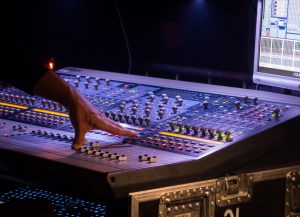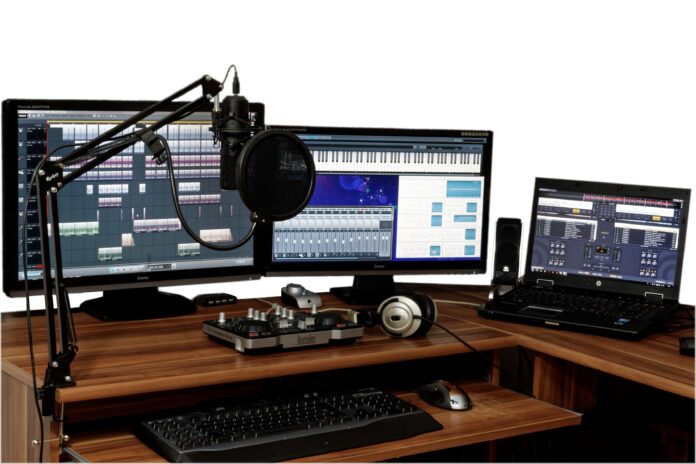Are you new to the music production industry? If you are, this article will highlight the most important stages of music production. Today, it will be presented as part 1, focusing on the process of music production for beginners.
Nowadays, music production is limitless. There is no one right answer. Currently, you may add whatever you want to hear to your music samples. As an outcome, you may take a few extra steps and design new music categories.
Nevertheless, if you want to be a music producer, you will need to be aware of certain stages in the production of music. The following stages are: songwriting, arranging, tracking, editing, mixing and finally mastering. Moreover, you will need to be certain of those requirements in order to understand the process and be able to create good quality audio loops. This article will focus on songwriting, arranging and tracking.
Songwriting
At present, the songwriting process may be difficult especially when we live in a wordless world. What is songwriting? It is a process that takes your music ideas to achieve music song loops that will match the melody, rhythm and harmony.
What are the qualities of a perfect song? There is no one answer to the question. When it comes to the message that the song tries to convey, it all depends on the listener and his/her experience. It is a subjective matter. On the other hand, when we look at songs as a craft, it can be assessed more precisely. It has to consist of a beginning, middle and ending as well as harmony, rhythm and melody. Another issue is lyrics – it needs to have a musical sound during a singer’s performance.
After some time, a good song will develop. The melody will start to fit together with harmony and various repetitions, helping the listener to get used to the so called choral progression. That type of song should also have a great sense of rhythm that will encourage dancing.
Many people have different point of views when it comes to songs. They see this process of tracking, the songwriters begin with the swing drum loops and later they record new pieces to the end of the song. It may be totally different from a singer who writes a song while playing the guitar and writes down the tunes in a notebook. Nevertheless, the final result may be assessed in accordance to the same guidelines, using the same questions: is harmony and melody sufficiently catchy to be remembered by the listener? What about its development – does the track still keep the listener’s attention?
On the other hand, it is worth to think about other possibilities. If the songwriter had to write a song using only one acoustic guitar virtual instrument and one female vocal sample, would it be a great song? If it had not been, the rest would not matter at all.

Arranging
The next stage of music production is arrangement which is often neglected and probably the most difficult of processes to understand. The arrangement makes a song great, so if the song becomes too monotonous but the melody and beats are okay – it means that there is a problem with the arrangement.
Arrangement is responsible for selecting the right musical instruments for every section of the song. It is then placed in the correct order, according to the song’s timeline.
Let’s assume that there is a song with a verse and a catchy chorus. To have a great song, you cannot just repeat them all the time. There needs to be some sort of buildup, for example the first verse plays only acoustic guitar virtual instruments and jamaican vocal samples, the next verse adds a bass drum loop and drums. It is also worth to think about a chorus and add the synthesizer sounds and different vocal samples. This is how a great song arrangement should look like.
However, despite the fact that you have implemented an instrument it does not mean it ought to be there all the time. In some cases, it is worth to add an acoustic guitar virtual instrument during pre-chorus in the most important part of the song to underline the climatic impact. There are numerous possibilities but it is important to keep all of these things moving. It is worth noticing that sometimes small additions may change the song; thus, making it more interesting for the listener no matter if he/she realizes the changes.
Another important issue refers to the number of sections that should be included. An experienced musician knows when the given section reaches its limits. The instruments should appear and disappear and the energy should be built to make the song more interesting.
At the end it is recommended to listen to the song and ask yourself if is it good enough. Sometimes, you do not have to do any additional changes at all. When you know when it is the right time to leave the song without any changes, it means that you are a great music producer.
Tracking
The next step is the implementation of the equipment. The goal of this stage is capturing the song performance.
Now the song is in the ether and it is a simple pile of music ideas. To make it clearer, the song should be recorded at a particular moment.
What is tracking? It is a process of recording different virtual percussion instruments that make the song special. In the majority of cases, it is recorded one song at a time. When you record a new track, you can hear other recorded songs as well. This process is called multi-track recording.
A lot of people wonder why tracking is not connected to songwriting. It is just a different process. When a songwriter writes a new song he/she just creates a new content without any editing. However, during performance of the song, you need to focus on playing in real time and thinking about music.
If you want to correct it, you may reach certain limitations of having an excellent performance that sounds naturally. However, if you would like to do writing and performing at the same time, you will probably achieve poor results. As an outcome, if you want to do those tasks effectively, you should do them separately.
Second part of article – How to make music – six steps to achieve success – part two







